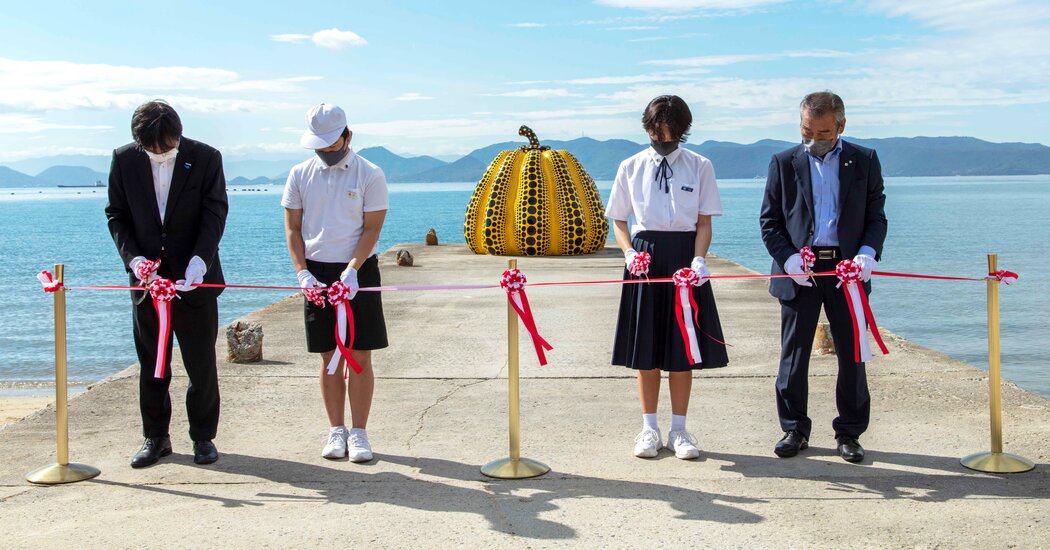TOKYO — Not to worry: A giant pumpkin sculpture by the artist Yayoi Kusama has been reinstalled on the Japanese island where it was thrashed by a typhoon last year.
Technically, this particular specimen of polka-dot, reinforced plastic is a replica of the one that was irreparably damaged. But no matter. People are happy, and the Instagram-friendly artwork has returned just in time for Japan’s reopening to foreign tourists after a coronavirus-induced hiatus.
“The pumpkin is a special feature of modern art, it’s been missing for a long time and it’s finally back,” Toshio Hamaguchi, 74, who lives on the island, said by phone on Saturday. “Locals are happy to see it return. We’ve longed for this.”
The original piece was installed in 1994 on Naoshima, an island in western Japan that has since become an unlikely haven for international art and architecture.
The yellow-and-black sculpture by Ms. Kusama, one of the world’s most popular artists, is a cousin of sorts to her “dancing” pumpkin that was featured at a sculpture show last year in the New York Botanical Garden. There is also a giant red Kusama pumpkin on Naoshima.
The yellow-and-black pumpkin, about six and a half feet tall and a little over eight feet wide, was in its usual spot on a pier last August when it was tossed into the sea by a storm that packed winds as high as 78 miles per hour. Staff members at Benesse Art Site, the artwork’s permanent home, were unable to rescue it in time.
The pumpkin was later recovered in a damaged state and hauled away, perhaps to the art-world equivalent of a compost pile.
“It suddenly disappeared, and that left what felt like a big hole in our life on the island,” said Shigenori Fujii, an official from the Naoshima Tourism Association.
The sculpture’s return this week made national news. The new pumpkin is a bit sturdier and has a special attachment in its stem — a feature that would allow it to be easily dragged to safety if another typhoon were to threaten it.
When the original pumpkin was installed on Naoshima almost three decades ago, residents were skeptical of its shape and bright colors, said Mr. Hamaguchi, the local resident.
At the time, the island’s economy was mostly industrial. The place did not yet have a reputation as a home for artworks by the likes of Claude Monet and James Turrell, or structures by the Pritzker Prize-winning architect Tadao Ando.
“My late wife asked, ‘What the hell is it?’” said Yoshio Nishiguchi,…
Click Here to Read the Full Original Article at NYT > Travel…
